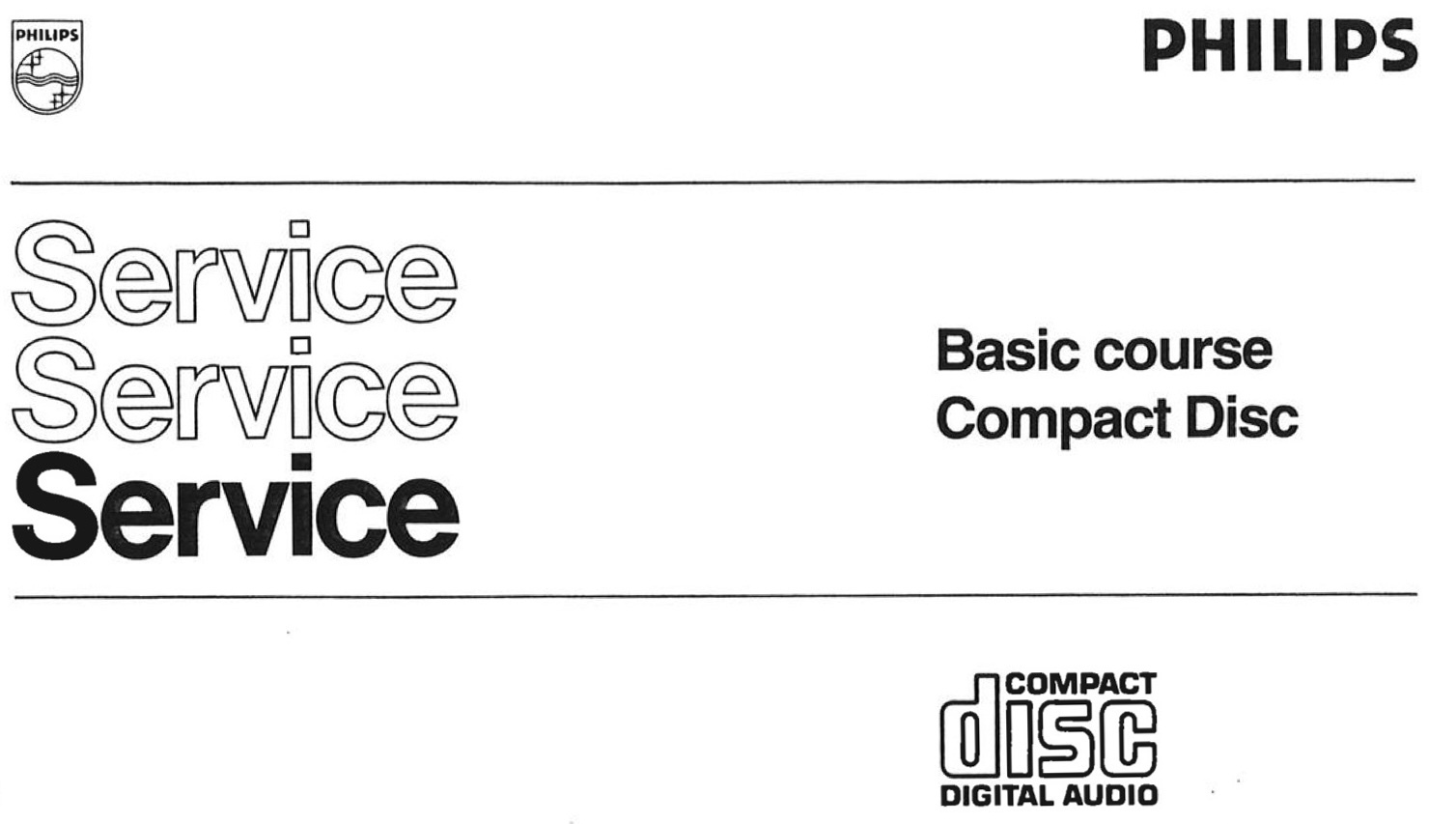Philips Service : 1983 Basic Course Compact Disc
Philips Service : 1983 Basic Course Compact Disc

- This manual was developed by Concern Service in close cooperation with Audio Service and the Audio Division’s Compact Disc Development Laboratory.
- The contents of this manual provide a basic knowledge of the Compact Disc system, the way it is marketed by Philips.
- Each chapter is preceded by a number of questions which refer to the subjects treated in the chapter concerned.
- If you are able to answer these questions, it will suffice to only go over to the summary.
The progressive development of technology has, in its turn, made it possible.to bring the storage and reproduction of sound to greater perfection.
At present it is possible to obtain good sound reproduction from high-quality discs. However a number of difficult problems still remain in the conventional system of mechanical scanning. These are:
– disc wear
– damage to the discs – signal-to-noise ratio – dynamic range
– channel separation – wow and flutter
The Compact Disc system offers a solution to these problems.
Since the disc is read out optically there is no mechanical contact between the pick-up unit and the disc.
Thus, the occurence of wear is prevented.
The information on the disc is covered by a relatively thick layer of transparent plastic so that scratches, dust and dirt cannot damage it Furthermore, the laser beam that scans the disc is focused relatively far below the plastic surface so that dust, scratches and dirt will hardly (if at all) affect the ultimate audio signal.
Digitization of signal processing has resulted in a signal-to-noise ratio and a dynamic
range better than 90 dB for the Compact Disc system.
Digitization has also made it possibile to correct errors which can occur during signal transmission. For this purpose, the digital information on the disc is supplemented by additional codes, These codes enable theplayer to check and, where possible, correct the digital information.
Audio information of one channel cannot affect the information contained in the other channel when applying the Compact Disc system, because the signals are processed completely separately.
This ensures an impressively good channel separation.
Wow and flutter belong to the past; within defined limits, processing of the signals occurs independently of variations in the turntable’s rotational speed, the reference being a crystal oscillator.
All these good qualities make the Compact Disc a unique device with an extremely good quality of reproduction.
1983 basic course compact disc
Source : Internet Archive
